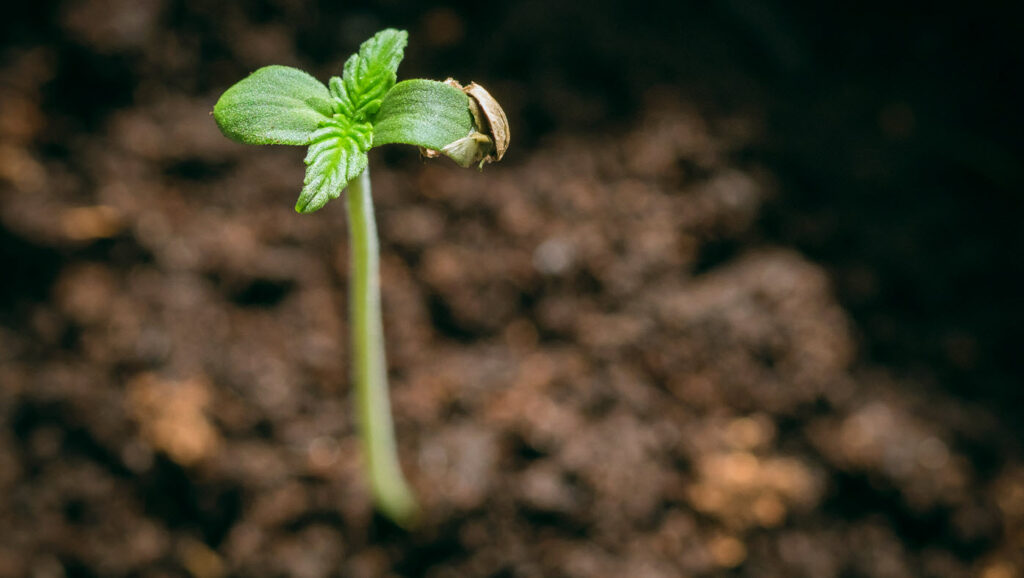
In the world of horticulture, the cultivation of cannabis stands as a testament to patience, dedication, and precision.
Each stage, from seed selection to the final cure, plays a pivotal role in the overall success of the crop. As the tide of legal and social acceptance rises, growing cannabis at home has transformed from a clandestine hobby to an artform. Considering the increasing normalization of cannabis, a common question arises: can you bring weed on a plane?
1. Sourcing High-Quality Seeds
The cornerstone of a successful cannabis grow lies in the quality of its foundation: the seeds. Not all seeds are created equal, and in a saturated market, discerning the wheat from the chaff can make all the difference.
Your crop’s vitality, potency, and yield often begin with your choice of seeds. Opting for the best seedbank can greatly enhance the likelihood of a prosperous grow.
Seed Selection Criteria
- Strain Variability: Different strains have unique growth requirements, effects, and flavors. Decide if you want an indica, sativa, or hybrid strain based on your personal preferences and cultivation environment.
- Origin: Ensure the seeds come from a reputable seed bank. Seed banks with an established track record tend to offer genetically stable and high-germination-rate seeds.
- Feminized vs. Regular: Feminized seeds produce female plants, which are the ones that yield bud. Regular seeds might produce male plants which need to be identified and removed.
Ordering and Storing
Always purchase seeds using secure and discreet methods, ensuring your personal information remains confidential. Upon arrival, store seeds in a cool, dark place until you’re ready to germinate. Proper storage can significantly increase their lifespan.
2. Germination Basics
The miracle of life begins with germination. Like the first beat of a heart, the germination process breathes life into the dormant potential of your seeds, setting the rhythm for the journey ahead. It’s more than just sprouting; it’s the beginning of a botanical ballet.
The Paper Towel Method
- Preparation: Moisten a paper towel without saturating it and place your cannabis seeds about an inch apart from each other.
- Place another moist paper towel over the seeds, ensuring they’re sandwiched between both.
- Keep this setup in a warm, dark place, like inside a drawer or cabinet.
Direct Soil Germination
- Fill pots with loose, airy soil, preferably a mix specially formulated for cannabis.
- Plant seeds about 1 cm deep and water gently.
- Place pots in a warm location, ensuring they stay consistently moist but not waterlogged.
3. Vegetative Growth
As your seedlings break ground, they embark on a vigorous phase of growth and exploration. The vegetative stage is akin to adolescence in humans; it’s a period of learning, stretching, and strengthening. Proper care during this phase ensures your plants develop the resilience and vigor needed for the challenges ahead.
Light
- Cannabis plants in their vegetative stage require 18-24 hours of light.
- Invest in high-quality LED or HID lights, providing full-spectrum lighting. Ensure there’s a balanced blue and red spectrum to foster strong vegetative growth.
Nutrients
- Begin with a balanced N-P-K (Nitrogen, Phosphorus, Potassium) ratio. As plants mature, they’ll require higher amounts of nitrogen.
- Start feeding at a quarter strength and gradually increase as the plant grows. Overfeeding can lead to nutrient burn, so it’s crucial to monitor the plant’s response.
4. Flowering Phase
Blooming in all its glory, the flowering phase showcases the cannabis plant’s true potential. It’s the crescendo in this symphony of growth, where all your efforts coalesce into trichome-laden treasures. Mastery of this phase can elevate your crop from mediocre to legendary.
Light Shift
Transition plants into the flowering phase by adjusting the light cycle to 12 hours on and 12 hours off. This mimics the natural reduction in daylight hours, signaling the plant to start producing buds.
Ensure complete darkness during the “off” period. Even minor light interruptions can stress the plant and hinder bud production.
Nutrient Change
As plants enter flowering, reduce nitrogen intake while increasing phosphorus and potassium. These nutrients aid in bud formation and overall yield. Watch for signs of nutrient deficiency, such as yellowing or browning leaves, and adjust feeding accordingly.
5. Harvest and Curing
Harvest is both an ending and a beginning. While it marks the conclusion of the growing cycle, it also heralds the start of the curing process – a phase where flavors mature and cannabinoids are preserved. This final chapter ensures your efforts culminate in a product of the highest caliber.
Identifying Harvest Time
Observe the trichomes, tiny resin-filled glands on the buds. When most trichomes turn milky white with some amber ones mixed in, it’s prime harvest time.
Pistil color is another indicator. When around 60-70% of them turn reddish-brown, it’s generally a good time to harvest.
Curing Process
After harvesting, trim away excess leaves and hang the buds in a cool, dark room with good ventilation.
Once the buds feel dry to the touch but still a bit spongy when squeezed, transfer them to airtight glass jars. Open the jars for a few minutes daily for the first couple of weeks to allow moisture to escape and fresh air to enter.
In conclusion, cultivating a successful cannabis crop from seeds sourced from elite seed banks is a rewarding endeavor, provided one follows methodical and proven steps.
With careful attention to seed quality, germination techniques, growth conditions, and the critical post-harvest processes, even newcomers to cannabis cultivation can achieve bountiful harvests worthy of envy. Remember, patience, attention to detail, and respect for the plant are the keys to unlocking its full potential.
You may also like:- WallStreet Pepe: The Future of Meme-Driven DeFi with $WEPE Token
- Get Stunning Nails with Gel Nail Stickers from Lehmani
- A Complete Guide to Affordable Printing for Everyday Needs
- Benefits of Setting Up Identity Verification for Web and Mobile
- Crypto Coins That Wall Street Experts Predict 25,000% Gains by 2025!
- Unleashing the Flexibility of Windows VPS Hosting
- Platform Ladders in Warehouse Automation: Integration, Benefits, and ROI Analysis
- How Green Loans Are Revolutionizing Financing for Sustainable Tech Solution
- How Annuity Plans Can Secure Your Retirement Goals
- Why Proxies Are Vital for Privacy, Security, and Accessibility








